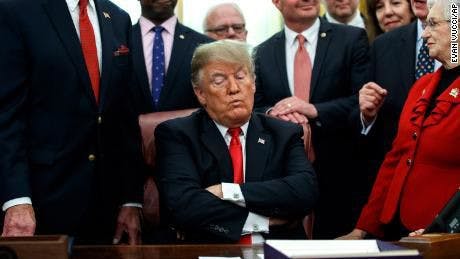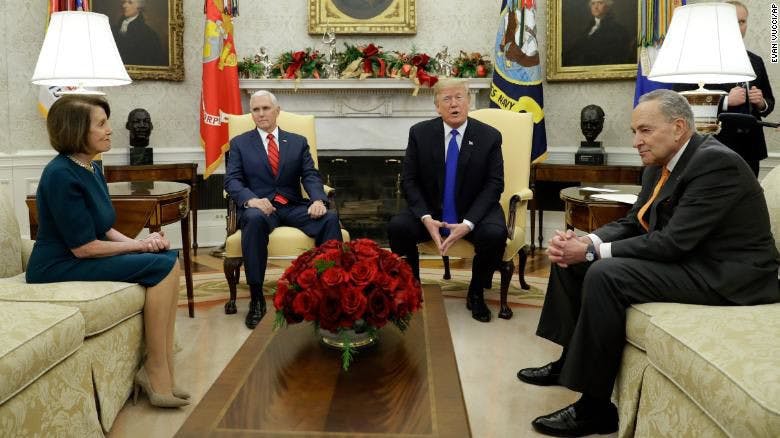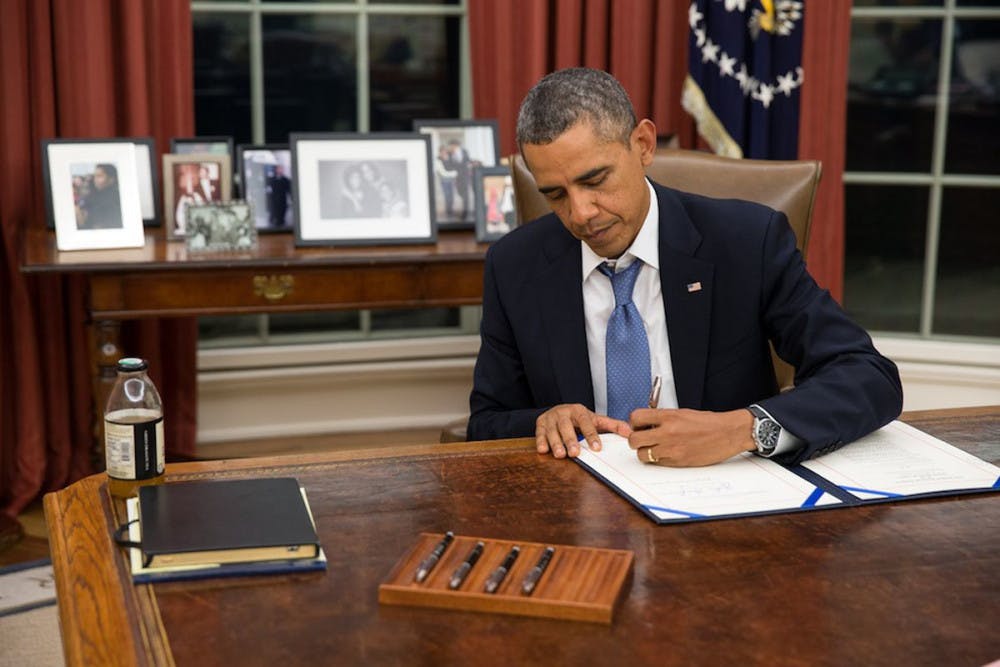Editor's note: The opinions expressed in this commentary are solely those of the author.

During the history 35 day shutdown, Trump refused to negotiate with House Democrats on anything that did not include the 5.7 billion dollars for his border wall.
A president does not hold a nation hostage to get what he wants. That’s never been how democracy works, and it never will be.
After a historic 35 day shutdown, President Donald Trump has finally made a deal with Congress to reopen the government for three weeks. During those three weeks, negotiations are supposed to be made on the southern border wall that Trump has been exclusively adamant about.
Almost two weeks before the government shut down on Dec. 22, 2018, Trump boasted during his televised meeting with Democratic leaders Nancy Pelosi and Chuck Schumer that he would be “proud” to shut down the government.
Then, the day before the shutdown, he tweeted that the shutdown is due to the Democrats, completely contradicting his original statements.
The Democrats now own the shutdown!
— Donald J. Trump (@realDonaldTrump) December 21, 2018

President Donald Trump, Vice President Mike Pence, Speaker of the House Nancy Pelosi and Senate Minority Leader Chuck Schumer have a televised discussion in which Trump stormed out after coming to disagreements about the border wall.
According to a Washington Post/ABC poll, 53 percent of recipients blamed Trump for the shutdown, 34 percent blamed the Congressional Democrats while 10 percent believed both are equally responsible.
During this shutdown, there have been a lot of comparisons to Former President Barack Obama’s shutdown that occurred from Oct. 1 to Oct. 17 in 2013. Comparing the two, Trump’s supporters have made the situation lighter by reminding Obama's supporters of his shutdown during his presidency.
Obama’s (first and only) shutdown came after the Republican-led House of Representatives and Democratic-led Senate could not reach a deal about the Patient Protection and Affordable Care Act, also known as Obamacare, and they reached a budget impasse that threatened massive disruption.
However, there are some key differences that make Trump’s shutdown look like what it is: a temper tantrum.


The shutdown focused in part on the Continuing Appropriations Resolution (2014) which was passed by the House on Sept. 20, 2013. The Senate removed the measures that were related to Obamacare and passed the revised version a week later.
The House put the original measures back in and passed it again on Sept. 29. The Senate refused to pass the bill if it would delay the Affordable Care Act, leading the two legislative houses to not develop a compromise bill by Sept. 30. The lack of a compromise caused the federal government to shut down since there were no appropriated funds at the beginning of the new fiscal year.
However, the shutdown was also because of the debt-ceiling, which had the government closing in on 16.699 trillion dollars in debt - since Washington did not have the flexibility to borrow more, the government faced the possibility of not being able to repay Treasury notes as they came in. Republicans wanted broader spending cuts in order to raise the debt limit.
Throughout the shutdown, Obama negotiated with House Republicans and had a lot of his conditions cut, even though Obamacare had already launched on the day the government was shut down. A lot of the Affordable Care Act had already been funded through previously authorized and mandatory spending, which meant the lack of a resolution did not affect it.
Obama did not need to force Obamacare because even leading Republicans such as Paul Ryan noted that it would move forward even if some elements were defunded, which they were. The debt ceiling is what reopened the government, not Obamacare.
There is also a huge legal difference between the two shutdowns, as Obamacare was already law and funding for the wall is not. With that being said, it’s easy to disprove any false statements that put the 2013 shutdown solely on Obamacare.

Obama signs a bill Sept. 30, 2013 - the day before the first and only shutdown of his presidency.
When looking at Trump’s shutdown, it’s apparent that there are no negotiations, Trump refused to negotiate on anything that wasn’t 5.7 billion dollars for the wall along the border between the U.S. and Mexico.
President Trump is the definite one to blame for the shutdown when he said that he'd veto a Senate-approved funding bill expected to easily pass the House.
According to The New York Times, two days before the shutdown Trump said he wouldn’t sign a spending deal unless it included the money needed for border security. To try to avoid a shutdown, House Republicans pushed through a stopgap funding measure that allocated the money for Trump's border wall and funding the government up to Feb. 8, according to the Washington Post.
Democrats have been trying to push a negotiation bill for Trump to re-open the government since the shutdown started, and the bill doesn’t even include a cent for his wall. All of that could have been done without the government being shut down.
The shutdown has affected airport security, national parks and museums, science and research on public health, food inspections and aid, social security, medicare and medicaid, veterans affairs and so much more, according to The New York Times.
It’s blatantly wrong to shutdown the government just because things didn’t go President Trump’s way. The funny thing is, two days after he said he wouldn’t cave to Democrats’ requests, he did. He caved.
Just a reminder, this is what the President said of Obama during the 2013 shutdown on a segment of Fox & Friends: "If you say who gets fired, it always has to be the top. Problems start from the top, and they have to get solved from the top, and the president’s the leader, and he’s got to get everybody in a room, and he’s got to lead. And he doesn’t do that, he doesn’t like doing that, that’s not his strength."
Do the rules change when he's at the top of the longest shut down in U.S. history?
Thankfully, for the next three weeks, the government is reopened and 800,000 federal employees are no longer being furloughed or working without pay - for now. Let’s hope that in the next three weeks, the President can learn how to negotiate with the House Democrats so this doesn’t happen again.
After all, this is his third shutdown. Maybe the third time's the charm.









